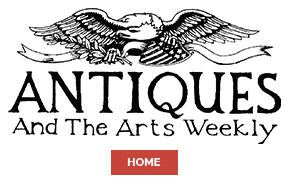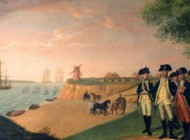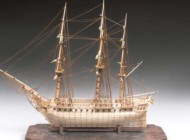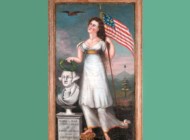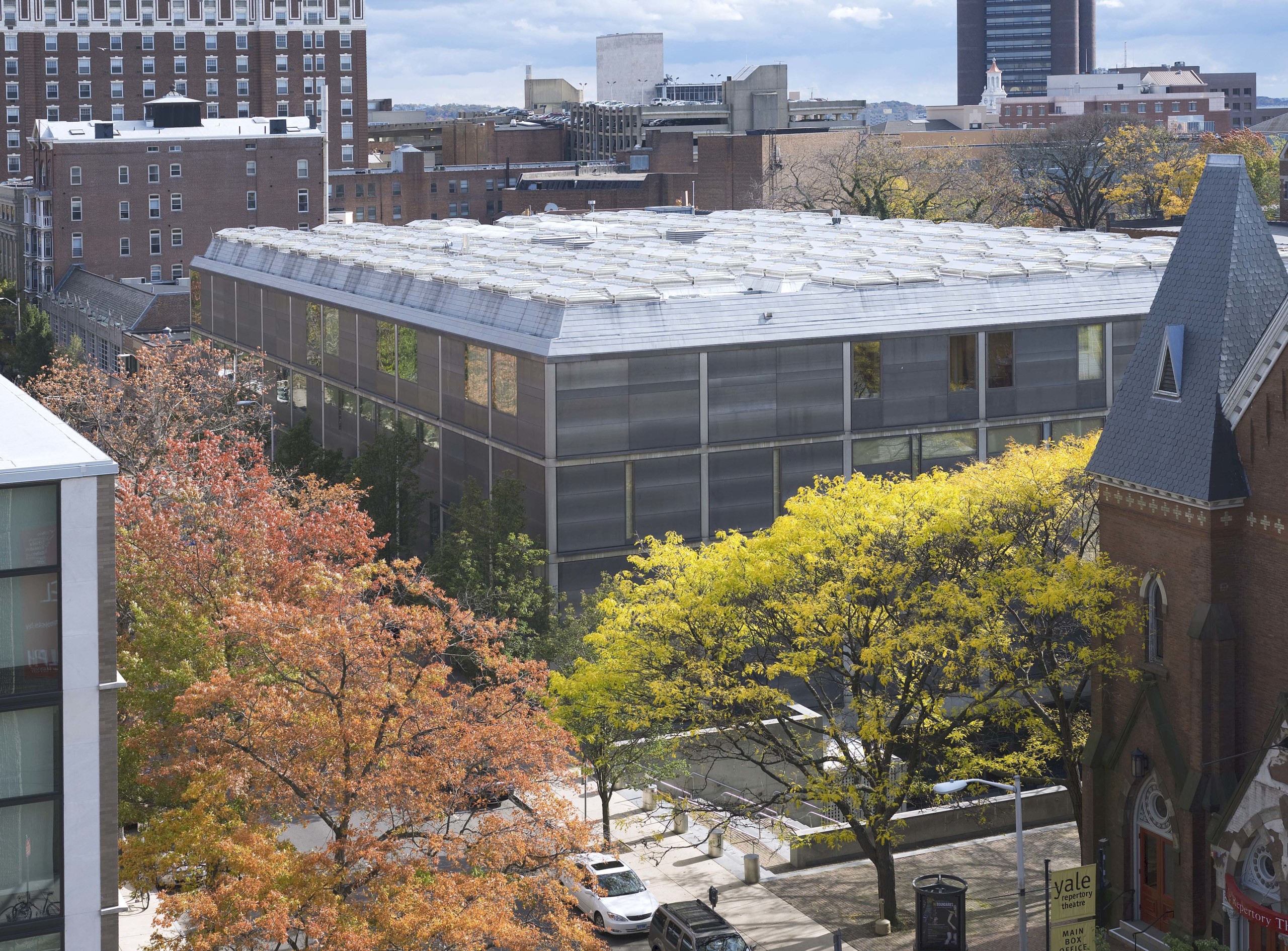
Exterior, Yale Center for British Art, New Haven, Conn.
By Kristin Nord
NEW HAVEN, CONN. — It is a glorious time for the reopening of the Yale Center for British Art (YCBA), which has been closed for two years for a significant renovation. Just as the nearby Yale University campus is festooned with spring bulbs, the YCBA will be greeting visitors with a major exhibition of Joseph Mallord William Turner (1775-1851) and a brilliant reinstallation of its permanent collections, all set in the refurbished jewel of a building designed by the architect Louis I. Kahn.
“J.M.W. Turner: Romance and Reality” features more than 75 paintings, prints and drawings, from the largest collection of the artist’s works outside the UK. Visitors begin their visit on the third floor with Turner’s celebrated oil painting, “Staffa, Fingal’s Cave” (1831-32), and segue through multiple spaces for an overview of Turner’s 60-year career. Kahn’s interiors are more than up to the task, with their brilliant vantage points and infusions of natural light.
“The play of light is integral to the aesthetic experience of the building, and this is what makes it such a special place for seeing art,” Martina Droth, the Paul Mellon director of the YCBA, said recently.
These galleries indeed seem to echo the ways in which Turner’s own explorations of light and natural effects evoke emotion. The experience is pure magic.
“The reopening of the museum on the eve of the 250th anniversary of Turner’s birth offers a timely opportunity to commemorate the unmatched range of one of Britain’s most innovative artists,” Lucinda Lax, the YCBA’s curator of paintings and sculpture, said. “Turner revolutionized the genre of landscape painting, and the exhibition provides a thorough exploration of his transformative practices.”
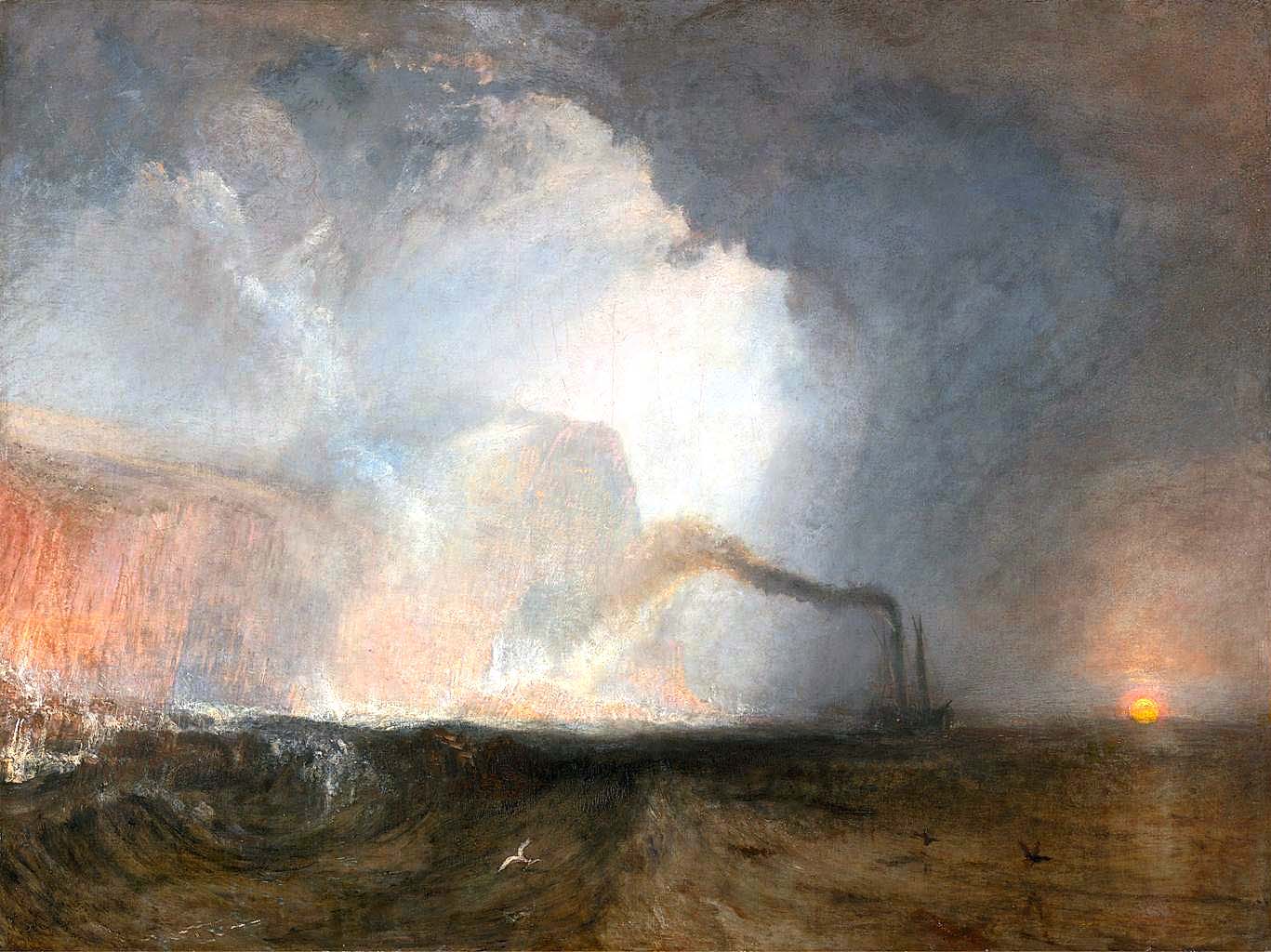
“Staffa, Fingal’s Cave,” oil on canvas, exhibited 1823. Yale Center for British Art, Paul Mellon Collection.
The artist would come to be recognized as the most radical and innovative painter of his time, and, indeed, his art can be seen in part as a reflection of the turbulent period in which he lived. Britain was in the midst of an industrial revolution in an age of imperial expansion and intercontinental wars. The transatlantic slave trade was at its height and scenes from this unfolding history also feature in his story.
The artist grew up near the bustling Covent Garden market in central London, where his father was a barber and a wigmaker. He dedicated himself to art at an early age. At age 14, he began taking classes at The Royal Academy, becoming a full member at 26 and a professor of perspective just five years later. Throughout his working life, he became an inveterate traveler, always with a sketchbook in hand. He financed his travels in England and throughout Europe from sales and commissions for his work — and his travels, in turn, generated an extraordinary cache of drawings, watercolors and paintings.
“His work passed through several shifts in style, arriving ultimately at the period of splendid dissolution leading up to his death at the age of 76,” Ian Warrell, a leading Turner scholar, writes, in the exhibition’s hot-off-the-press accompanying catalog.
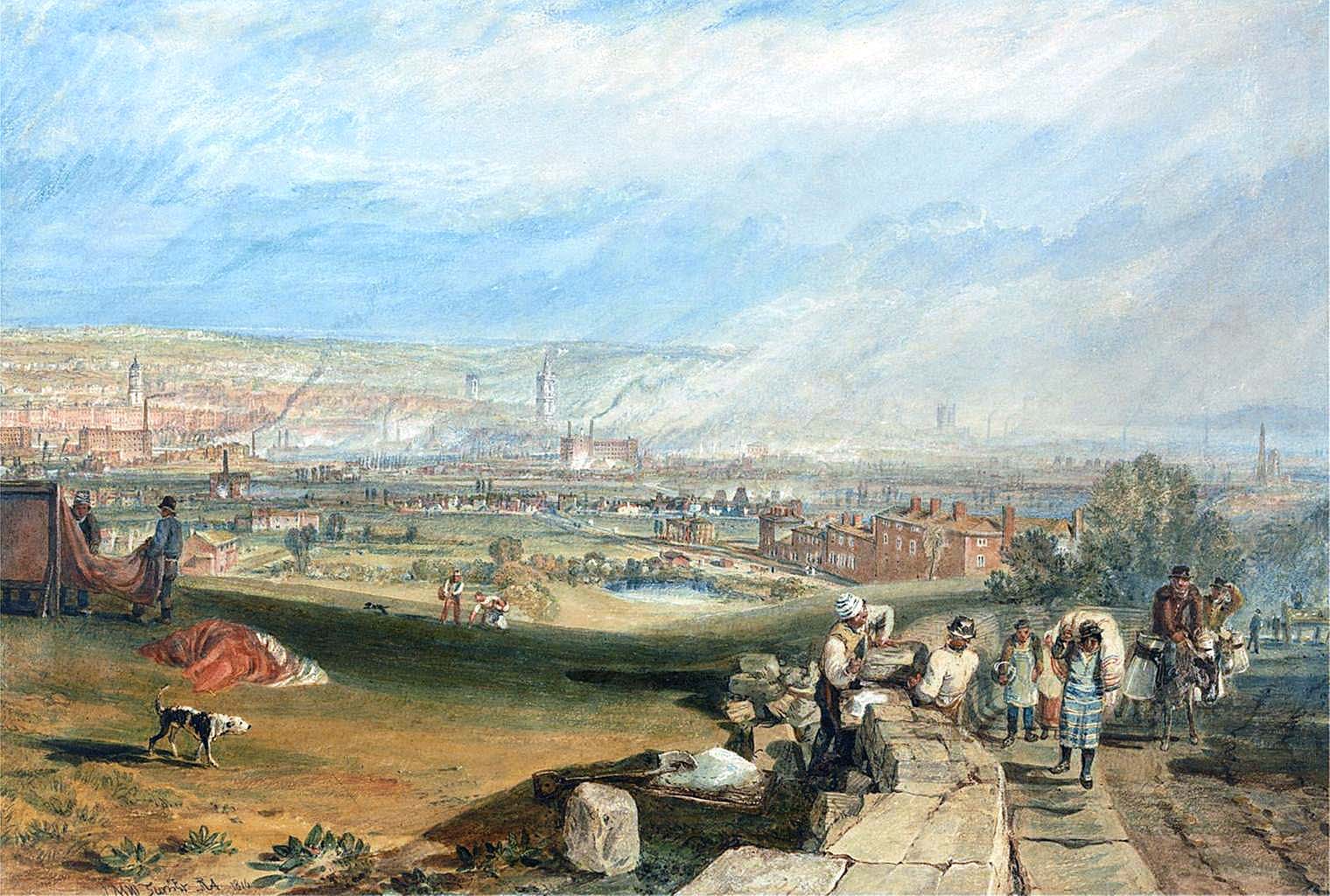
“Leeds,” 1816, watercolor, scraping out and pen and black ink on paper. Yale Center for British Art, Paul Mellon Collection.
“Romance and Reality” moves visitors through specialized galleries for light-sensitive pieces, watercolors and works on paper. Visitors can linger over the artist’s precise architectural drawings which distinguished his early life and consider the role that the coastal town of Margate played, in varied works that range from the maritime painting exhibited in 1796 as well as in Turner’s economical drawings of the English coast in his “Channel Sketchbook” (circa 1845).
Turner and John Constable were contemporaries, and each trained their ambitions on the landscape. Farrell distinguishes between the art of the two, with Constable’s “resting on the beauty of earthy particularity and Turner’s in the impressionistic and visionary.” The two artists admired the classical landscapes of Claude Lorraine, but Turner made a case for defining landscape expansively “to encompass not just the pastoral, the sublime or the marine, but also its historical and topographical aspects,” Warrell writes. While Turner revered the landscapes of old Dutch masters, he also experimented and innovated to capture atmospheric effects and create works that were distinctly his own.
To achieve his end results, Turner drew upon an idiosyncratic arsenal of unorthodox techniques, whether using his elongated thumbnail as a claw, or applying oil-like substances to his watercolors, or vice versa. And he embraced new pigments as they came on the market to intensify his color palette, employing the chrome yellow pigments for which he became known when they became available by the mid 1800s, as well as synthetic ultramarine, chrome orange and emerald green.
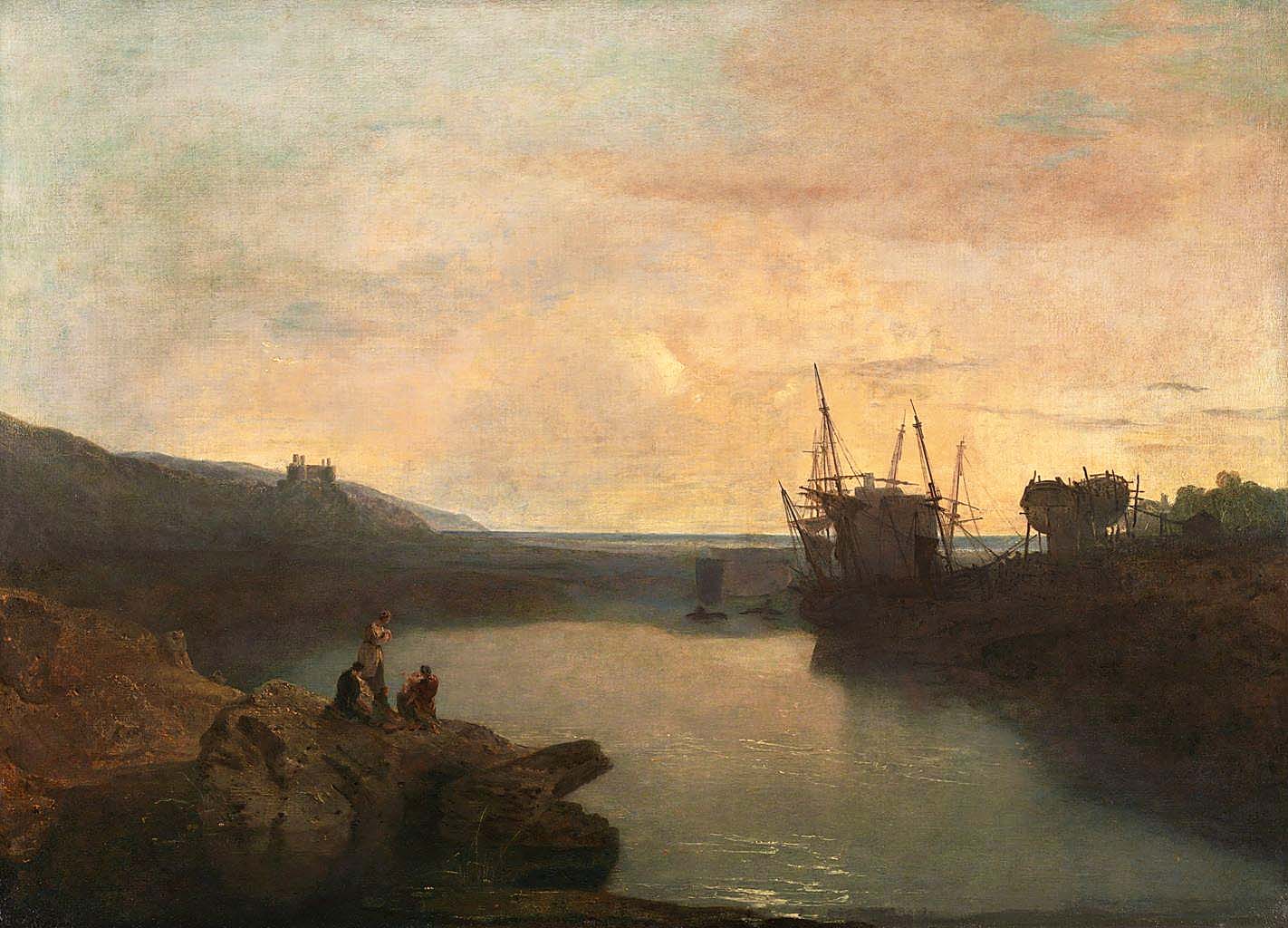
“Harlech Castle, from Tygwyn Ferry, Summer’s Evening Twilight,” 1799, oil on canvas. Yale Center for British Art, Paul Mellon Collection.
As he undertook annual tours of Great Britain and Europe often in anticipation of, or in response to, commissions for topographical illustrations and prints, Turner always traveled equipped with the tools of his trade: a rolled-up, loosely-bound sketchbook, pencils and a small traveling case of watercolors. Some trips were aimed at collecting material for watercolor collectors, while overall these trips also helped him build a reference library of ideas that he could use when he returned home.
Turner also proved to be an astute businessman, and he seized upon lucrative opportunities to translate his works “into black and white equivalents,” Turner scholar Gillian Forrester writes. Covent Garden supported a flourishing assemblage of engravers’ studios, and printers’ shops. “Surrounded by the percussive rasp of rockers, scratching of etching needles and abrasion of burnishers and scrapers on copper plates, and amid the pungent odor of the acid bath,” Forrester writes, he grasped the ways he could build the business side of his practice while also relishing the transformation of his original works into other formats, in effect translating “lines into the language of colors…”
Turner devoted portions of his creative life to working with professional engravers — sometimes undertaking the engraving himself — and produced more than 700 hundred authorized prints. Mezzotint, with its dramatic contrasts of dark pigments and impasto highlights, proved “an ideal medium for his works,” as seen in his efforts to transform his acclaimed painting, “The Shipwreck.”

“Wreckers — Coast of Northumberland, with a Steamboat Assisting a Ship off Shore,” 1834, oil on canvas, exhibited 1834. Yale Center for British Art, Paul Mellon Collection.
But this field offered him many other opportunities — including commissions to design pocket-sized “annuals” of poetry anthologies popular at the time, and his “Liber Studiorum,” a series of engravings in etching and mezzotint of his own landscape subjects. Forrester notes that these collaborative efforts, which relied upon a complex ecosystem of artists, engravers, publishers and printmakers, certainly contradict our vision of Turner as an isolated genius.
Yet from the painstaking corrections which we can see on display here, it’s clear he could be an exacting taskmaster.
One comes away from this survey of YCBA’s major Turner collection, the first in 30 years, challenged to see the world as he did. No wonder, as one critic proclaimed after encountering “Staffa, Fingal’s Cave,” that Turner’s art evinced “the works of a man of genius, who has studied nature in all her aspects with the eye and knowledge of a painter and the mind of a poet.”
“J. M. W. Turner: Romance and Reality will be on view through July 27. In spring 2026, the acclaimed oil painting, “Dort, or Dordrecht: The Dort Packet-Boat from Rotterdam Becalmed” (1818), hung towards the end of the YCBA presentation, along with a selection of other works by Turner, will be on loan to the Dordrechts Museum in the Netherlands. This will mark the first time that the “Dort” will be seen by audiences outside of North America and the UK.

“Dort, or Dordrecht: The Dort Packet-Boat from Rotterdam Becalmed,” 1818, oil on canvas. Yale Center for British Art, Paul Mellon Collection.
Visitors who step inside YCBA this spring will soon find out that one visit is not enough. There is also the provocative and moving exhibition of paintings and sculpture by leading contemporary British artist Tracy Emin (born 1963). Emin also figures in Margate history, where she was born and now oversees the Tracey Emin Artist Residency (TEAR) program, which offers select students art studios for 18 months at a time rent-free. Emin came to prominence as a multidisciplinary artist in the 1990s and made a name for herself with her sculptural installations and her use of such unconventional materials as neon. The exhibition, “I Loved You Until The Morning,” her first major show in North America, focuses on her “often meditative explorations of identity, trauma and resilience.”
Across the street at the Yale University Art Gallery, Kahn’s earlier design project, is “Romney: Brilliant Contrast in Georgian England,” which showcases the portrait painter George Romney (1734-1802), who remains mostly known for his likenesses of wealthy patrons. Romney never achieved his dream of becoming a history painter, but his gifts as a musician, and instrument maker, combined with his poignant sketches of late Eighteenth Century prisoners makes this a moving side trip on its own.
Foremost is Lax’s masterful reinstallation of the museum’s permanent galleries. “In a New Light: Five Centuries of British Art,” moves visitors from the reign of Queen Elizabeth I up through the present, from Sixteenth Century portraits of nobles and other symbols of the British empire on to more contemporary critiques of Britain’s imperial past. Rather than paying homage to a bygone empire, the global impact of colonialism comes to the fore. Artists from far-flung colonies appear as pins on a map and serve as beacons within this context. This is a museum that would have us think. Nestled within Kahn’s building, and nurtured by his egalitarian spirit, this is a treasure-within-a-treasure experience for our troubled times.
The Yale Center for British Art is at 1080 Chapel Street. For information, www.britishart.yale.edu or 877-BRIT-ART (877-274-8278).
